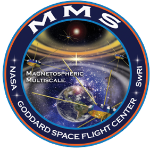The Multiscale Magnetospheric Mission (MMS) provides high-resolution data of the Earth's magnetosphere and coupled with significant advances in machine learning algorithms, we can usefully apply machine learning to in situ plasma data. In this study, we apply the fully convolutional neural network (FCN) deep machine learning algorithm used in Hugo Breuillard et al. (2020) to MMS data in order to classify 10 major plasma regions in near-Earth space for the period 2016-2025. We assess the classification performance using several quantitative metrics, demonstrating that the FCN approach effectively captures the dynamic characteristics of plasma behaviors across different regions. Moreover, we show that the model maintains high accuracy even when applied to previously unlabeled MMS data. Finally, we illustrate the method's broader applicability by extending it to data from the Cluster and THEMIS missions, suggesting its potential for widespread use across various in-situ spacecraft plasma datasets.
|
|
|
Submissions (by speaker) > Alqeeq SobohAutomatic Classification of Plasma Regions in Near-Earth Space With Supervised Machine Learning using Magnetospheric Multiscale (MMS) Mission
1 : Laboratoire de Physique des Plasmas
Observatoire de Paris, Université Paris sciences et lettres, Ecole Polytechnique, Sorbonne Université, Sorbonne Université, Université Paris-Saclay, Centre National de la Recherche Scientifique : UMR7648
2 : Bureau de Recherches Géologiques et Minières
Univ. Orléans, CNRS, BRGM, ISTO, UMR 7327, F-45071, Orléans, France
3 : Laboratoire de Physique des Plasmas
* : Corresponding author
Observatoire de Paris, Ecole Polytechnique, Sorbonne Université, Université Paris-Saclay, Centre National de la Recherche Scientifique
|

 PDF version
PDF version
